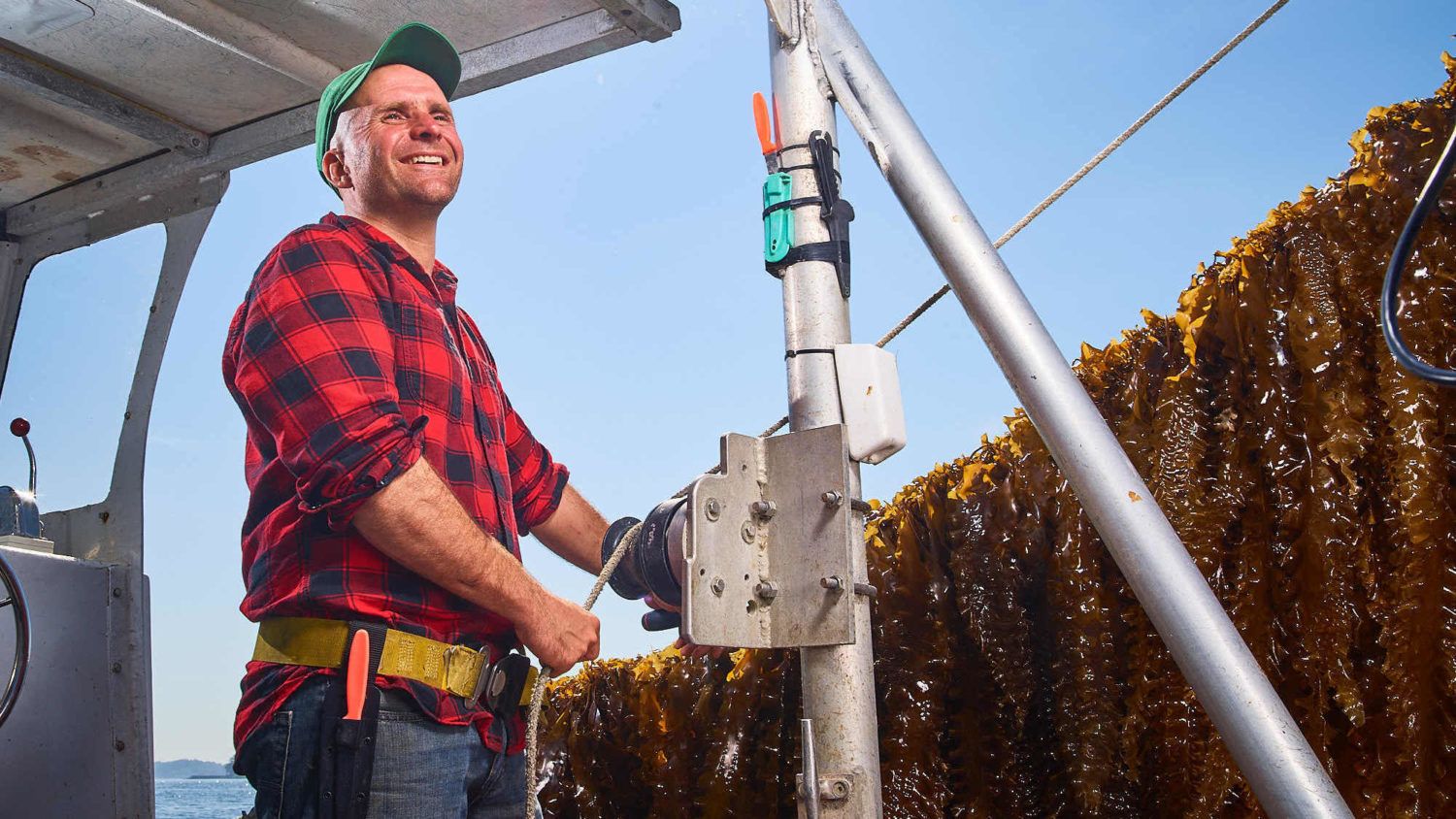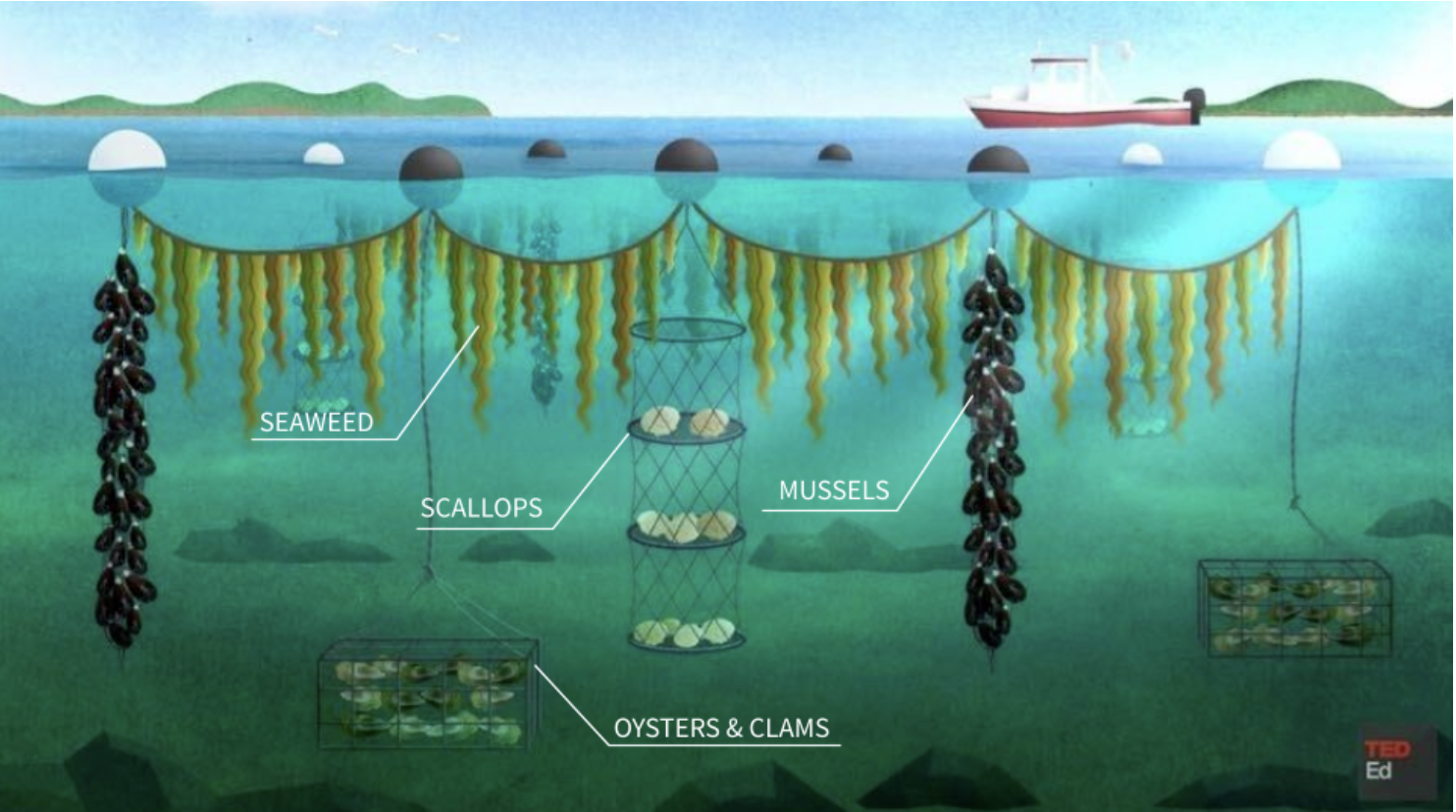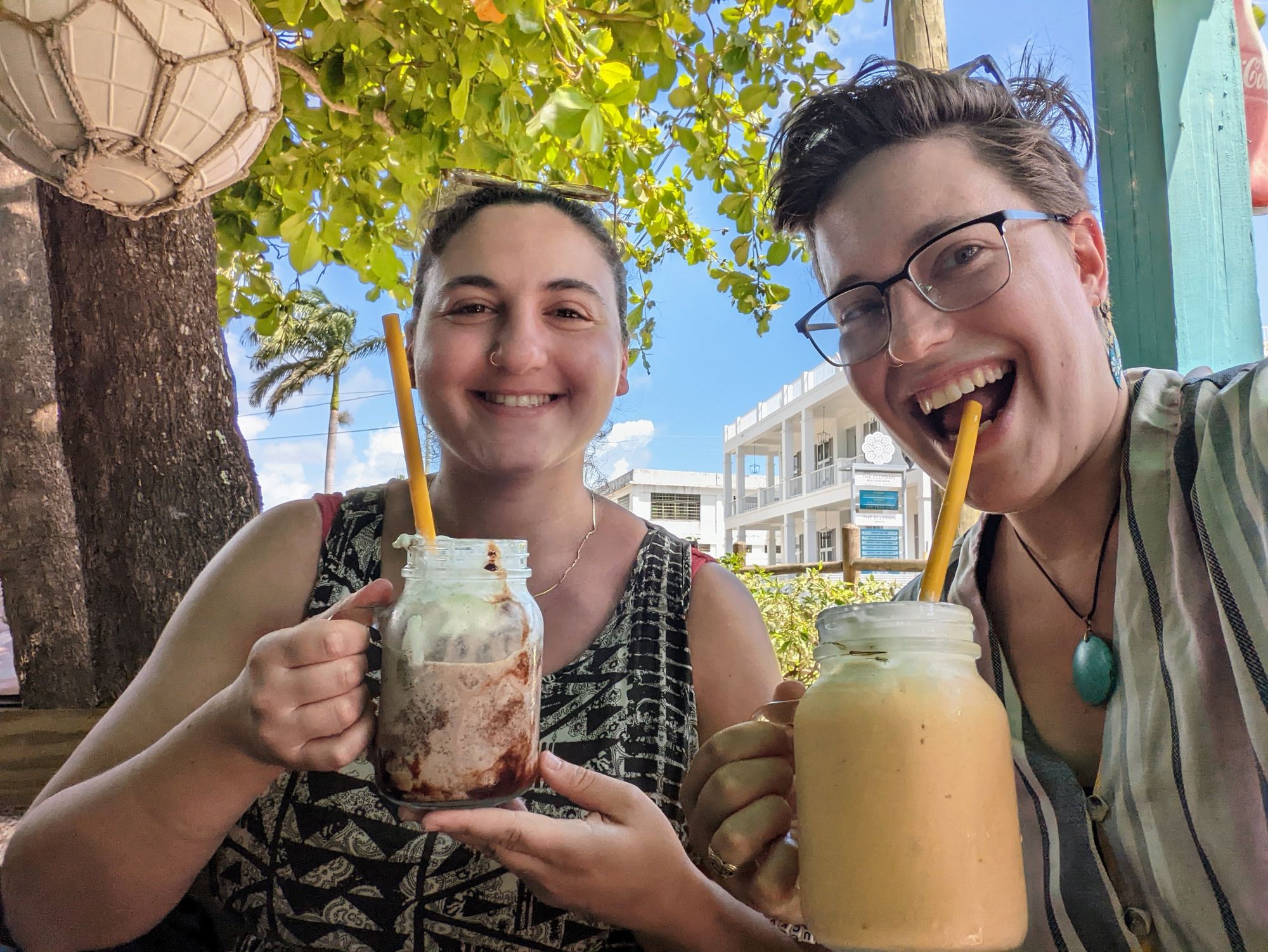Our oceans are dying.
In just a single generation, we have gone from fully stocked seas to 90% depletion of commercial fish species such as cod, salmon, tuna, and anchovies.
When I learned about the overfishing crisis, it left me feeling hopeless and helpless. As a development worker in Nicaragua and Belize, I witnessed the many challenges vulnerable coastal communities face due to overfishing. More than three billion people rely on seafood for their livelihoods, but local fishermen across the globe travel further out to sea only to catch fewer fish.
We are going to run out of fish to eat in a few short decades, and at the same time, we are desperately going to need sustainable solutions that meet our rising demand for food on a hungry and growing planet.
Something has to change. Luckily, Mother Nature has already provided us with one shell of a solution: sustainable seaweed farming.
Saving Our Seas by Sowing Seaweed
As a commercial fisherman, Bren Smith witnessed the devastating effects of the overfishing crisis off the coasts of Alaska. Cod stocks abruptly collapsed in 1993 leaving Smith disheartened by an industry he lived and breathed.

To find a way to stay out on the water and continue doing what he loved, Smith started shellfish farming. He then realized he could grow seaweed in the same small plot of ocean. Growing kelp and crustaceans together allowed them to naturally benefit each other which improved the health of his farm, and Smith could sell the kelp for added income. It was a clear win-win.
Smith’s method involves the use of horizontal ropes held afloat by buoys close to the water’s surface and vertical ropes on either side anchored to the seafloor. Sea vegetables like seaweed are tied to the ropes and grow down into the sea like an upside down vegetable garden.

Seaweed Farms, Not Fish Farms
Bren Smith wants us to “Grow with the Ocean.” This means that local environments should decide what farmers grow, not the marketplace. We may want to eat tuna salads, salmon burgers and fish tacos, but the ocean simply cannot give us a never ending supply of Filet-O-Fish sandwiches.
Unfortunately, growing fish in aquaculture pens just isn’t going to work either. Factory fish farming is no different than our intensive and destructive agriculture of pigs, chickens, and cows on land. And it comes with the same kinds of disease outbreaks, GMO concerns, and environmentally destructive practices.
Bren Smith's farms, on the other hand, are one of the most sustainable forms of food production on the planet. Ocean farming is regenerative because it does not require any the inputs of traditional land-based agriculture: no fresh water, fertilizers, or feeds. It also helps mitigate climate change by absorbing carbon directly from the atmosphere for growth.
In 2016, Smith started the nonprofit GreenWave to train new ocean farmers, create jobs, and protect the planet. To support Smith and other sea farmers, we need to expand the meaning of the term aquaculture to include a wide array of sea vegetables and local shellfish.
Basically, we need to change what ends up on our dinner plates.
After hearing Bren’s story, I became obsessed with all things seaweed. While in grad school working toward an MBA, I quickly became known among my peers as “that seaweed girl” because every project I worked on and every paper I wrote was about this incredible plant. So let me tell you:
Why Seaweed?
Because it tastes good and it's good for you. Surprisingly, seaweed can be broken down into a vegan gelatinous substance which is found in many products ranging from toothpaste to almond milk. Seaweed is also popular in a number of Asian dishes like sushi rolls and soups, but we can get seaweed onto our plates in plenty of other ways too:

How Can I Help Save Our Seas?
Eat more seaweed!
Keep munching on those nori snacks and enjoying your sushi rolls. But also consider trying new sea vegetables out there like sea moss gel, kelp noodles, and even sea asparagus. Let your consumer voice empower industries to truly care about sustainably harvested seafood so that our oceans can continue to provide for us for generations to come.
And take a moment to sign up for my newsletter so that you can learn more about the future of sustainably farming our seas:
Lastly, Bren Smith’s TedTalk changed my life. If you liked my article, it is absolutely worth your 15 minutes.